Memory matters, low-load tests
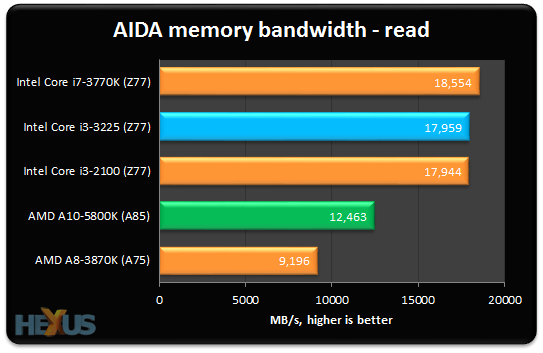
We start the examination with a look at synthetics; namely memory bandwidth, which is crucial to the ability of the integrated graphics to function at their best.
All CPUs are using the same memory and timings - DDR3-1,600, 9-9-9-24-1T - and, according to the latest version of AIDA, the Intel chips win this one handsomely. Perhaps the better comparison is between the best Trinity and previous-gen Llano CPUs, where AMD's latest fares better.
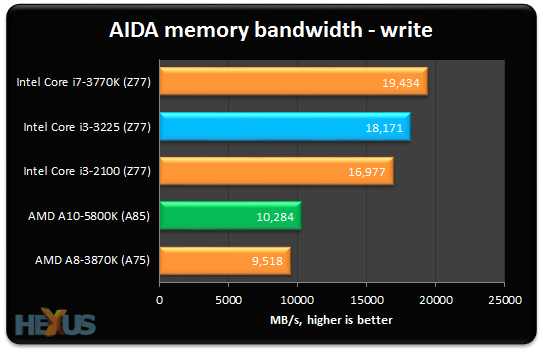
A similar story in the write test, but let's not take too much from this single benchmark.
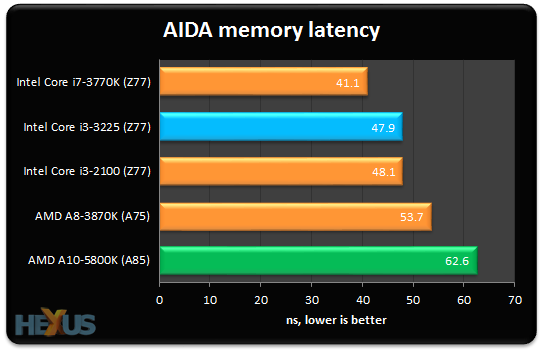
Here's a turn-up, folks, as Trinity is reckoned to have greater memory latency than Llano.
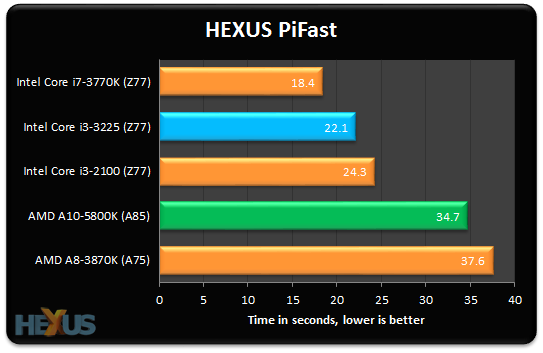
Put these synthetics together, take the chips' frequency, architecture and instructions-per-clock-cycle into account, and the single-thread weakness of Trinity, apparent in the review of the mobile chip, is shown here. Remember that the A10-5800K runs at 4.2GHz in this test, compared with 3.0GHz for the Llano-based A8-3870K. Intel's Core i3-3225 comfortably beats both AMD APUs.
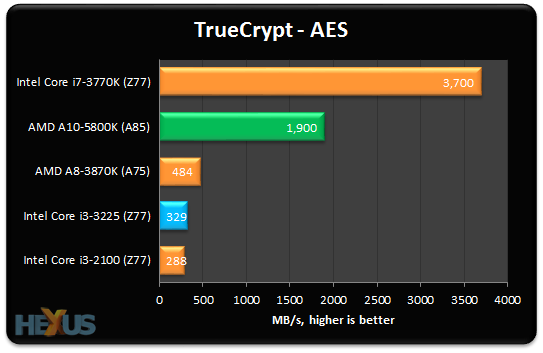
Easy question for you, readers. Can you guess which two CPUs in this line-up have hardware-accelerated AES performance? Here's one area where AMD makes substantial performance leaps from one generation to the next.









